Emiko Davies's Blog, page 2
January 3, 2024
A forgotten castle in Tuscany: Castello di Fighine
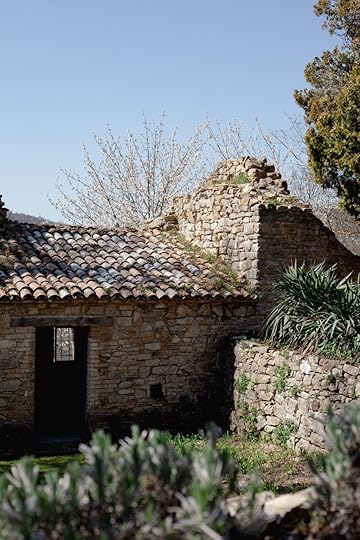
I have been lucky to visit many beautiful places in my home region of Tuscany but Castello di Fighine is so special, it is hard to describe in words what kind of place it is. Picture a hilltop in the middle of the rustic southern countryside and an empty, 11th century hamlet, brought back to life after sitting for centuries in ruins that had been taken over by nature.
Joy Ulfane, the South African owner, shows me her old photo album of the castle’s history, and the first photographs are of the vines, trees and even cows that were its residents when she and her husband Max arrived in 1995. Max and Joy Ulfane fell in love with it and began rebuilding it 1995, stone by stone, room by room, eventually recreating not only the castle, but also all of the other buildings, turning the old watch tower into a beautiful home that they call Casa Janine (this is where they lived while the castle was being restored; you can tell it was adored as it feels so homely). They are in their 90s now and they still come to stay at the castle.
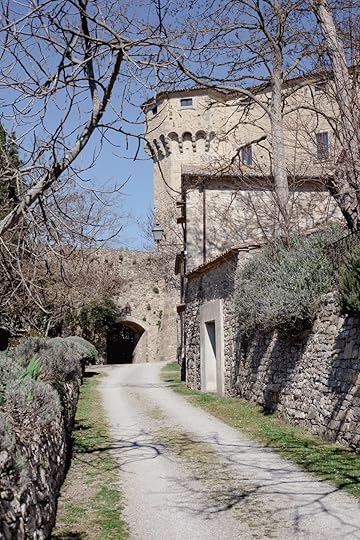
There are now five houses and two apartments, a church, a theatre and gardens within the walls of the castle, accommodating up to 34 people. The hamlet of Fighine is high up on a hill at 600 metres above sea level, several minutes drive from San Casciano dei Bagni, an ancient spa town where stunning bronze Etruscan statues were recently uncovered and near the border of Umbria.
The remarkable thing about the dwellings — I can’t call them apartments, they are so much more than that — at the Castello di Fighine is that nothing feels new. It feels as though these rooms, the fireplaces, the doors, the light fixtures have all been there. Partly it’s due to the most careful and thoughtful restoration done with the help of some incredible period decorators, David Mlinaric and Hugh Henry, London-based interior designers. Partly I think there is just something about the place, something that feels very soulful.
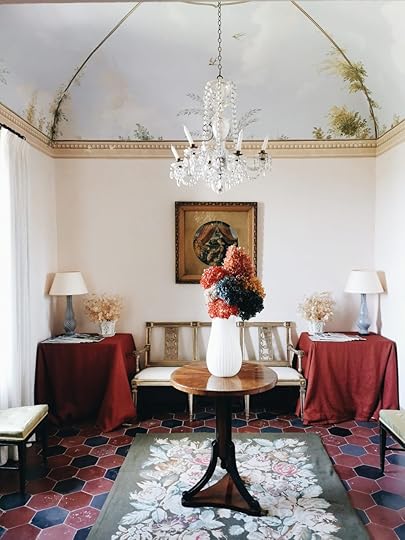
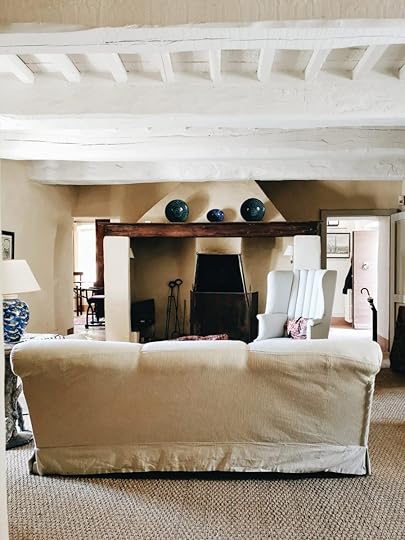
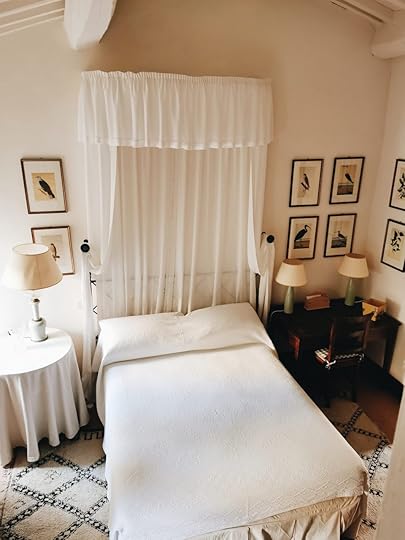
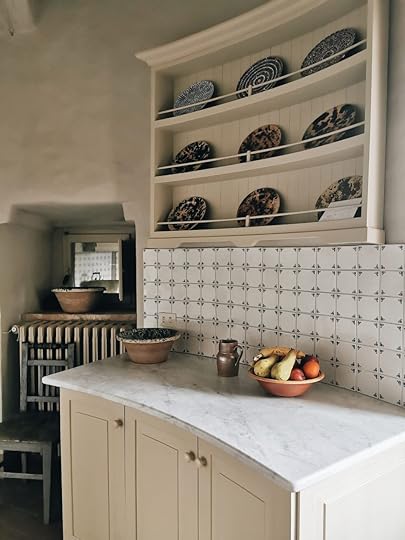
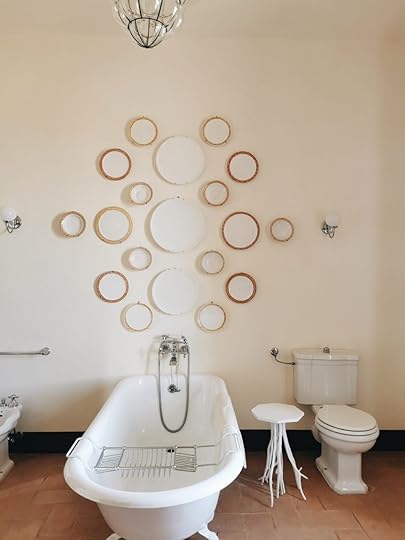
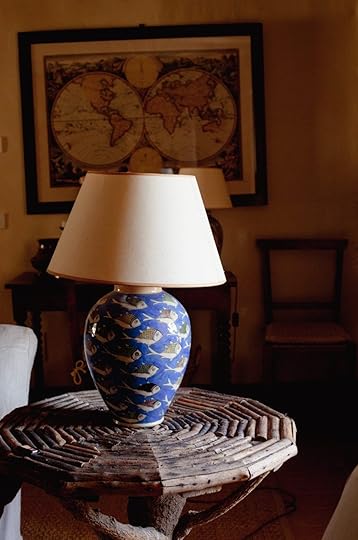 Possibly the most surprising thing of all in this picturesque little hamlet of self-catered lodgings in the middle of wild southern Tuscany is the addition of a Michelin starred restaurant. There was the remnants of an old school house within the castle — the Ulfanes decided it would be a good place to put a restaurant and asked their friend Heinz Beck (yes, the three-Michelin-star Heinz Beck) to look after it. Open for lunch and dinner, you can visit even if you’re not staying in the castle accommodations.
Possibly the most surprising thing of all in this picturesque little hamlet of self-catered lodgings in the middle of wild southern Tuscany is the addition of a Michelin starred restaurant. There was the remnants of an old school house within the castle — the Ulfanes decided it would be a good place to put a restaurant and asked their friend Heinz Beck (yes, the three-Michelin-star Heinz Beck) to look after it. Open for lunch and dinner, you can visit even if you’re not staying in the castle accommodations.
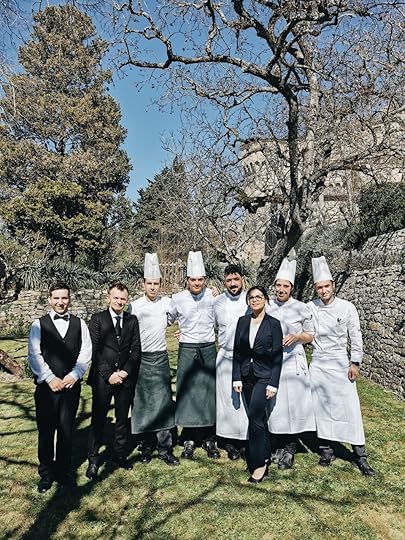
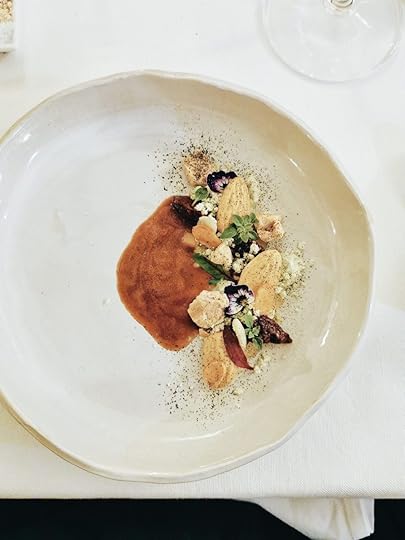
It is absolutely magical and an utterly quiet little gem. In spring, when we were here (in 2023), it was incredibly peaceful and so quiet, light years away from the hustle and bustle of Florence. It seems entirely a secret spot.
Getting there: Fighine is halfway between Rome (170km) and Florence (150 km) and about an hour and half’s drive south of Siena and just under an hour from Orvieto in Umbria. A car is the best way to get around this area for sure, it is very secluded but also you’ll want to have a car so you can go exploring (if you can tear yourself away from the fireplace/swimming pool/gardens, depending on the season you visit!).
[Note: I was invited to visit this beautiful property and the restaurant in spring 2023. The words, impressions and photos are all my own — Emiko x]
The post A forgotten castle in Tuscany: Castello di Fighine first appeared on Emiko Davies.
November 15, 2023
Gohan Book Tour events, Eastern Australia 2023

Gohan events coming up!
This is my first book tour since March 2019, so I am thrilled to be able to come and meet people and celebrate the book with delicious food and chats. I know I need to still visit so many other places, but sadly this is a self-funded trip and it’s very close to Christmas time when bookshops and restaurants get so busy, but if you have an idea for the next book tour’s event location, please let me know!
There are a few events to be finalised, I will put them all on my events page here as well, as they become available to book.
Sydney
November 25 — a very special all day cooking class, we will prepare my ideal Japanese breakfast together, which will teach you the fundamentals for any Japanese meal (here’s why I love Japanese breakfasts most of all) and there will be some beautiful Japanese gifts for the guests of this class. More here.
November 26 — book launch, snacks and chat at the beautiful Woollahra library, Sydney. See more here.
Melbourne
Novermber 27 — author talk in conversation with Stephanie Alexander at Readings, Hawthorn
November 28 — author lunch at Ima Project in conversation with Julia Busuttil Nishimura. Tickets coming soon!
November 29 — author talk at Books for Cooks with nibbles from Gohan – SOLD OUT!
November 30 — Evening cooking class at The Fermentary.
Franklin, Tasmania
December 1 — Drinks and Q&A at The Bowmont
December 3 — Japanese home cooking workshop at The Bowmont – SOLD OUT!
Robertson, NSW
December 9 — Gohan cooking workshop at the wonderful Moonacres Cooking School
Canberra
December 10 — Book launch event! Drinks and Q&A with the fabulous Joanna Savill at Verity Lane
December 11 — Evening author talk at the Asia Bookroom (6:00pm)
Orange, NSW
December 15 — Cooking workshop at Sophie Hansen’s farm kitchen

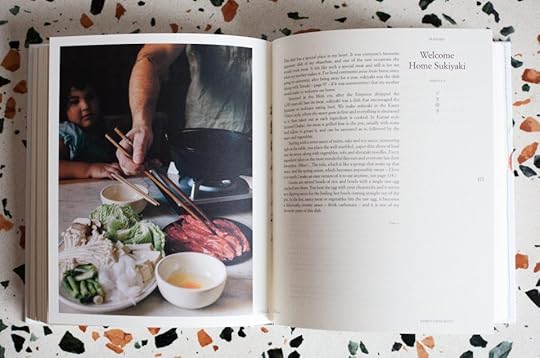
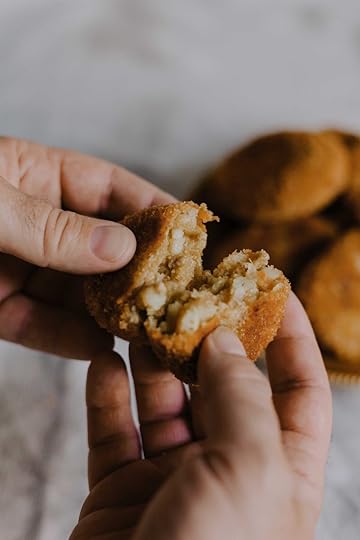
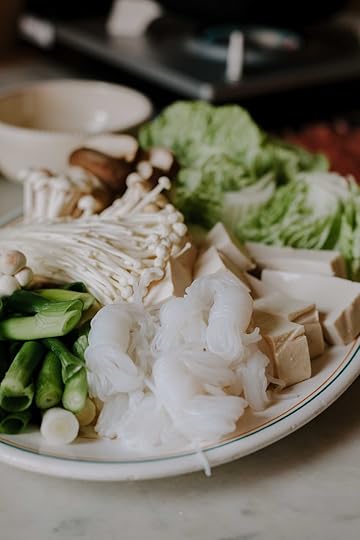

The post Gohan Book Tour events, Eastern Australia 2023 first appeared on Emiko Davies.
September 17, 2023
Homemade tofu recipe from the mountains of Nagano
My Japanese grandparents lived in an area with many Buddhist temples (where meat is not eaten) so they were spoiled for choice when it came to fresh tofu shops on their street. I remember those old fashioned shops – spartan, concrete floors and stainless steel vats of water holding the morning’s just-made tofu, and the a smiling old woman selling them, but I especially remember my grandmother’s breakfasts of hiyayyako or chilled, fresh tofu, simply dressed with soy sauce and grated ginger. I’ve been seeking out that flavour and texture again for a long time and decided the only way I would ever find it is if I could just learn to make tofu at home.
So I travelled to Chino, a two hour train ride from Tokyo, to the foothills of Nagano’s mountain ranges, to learn how to make fresh tofu with Kobayashi-san, who makes tofu for all the local schools and sells the rest through his tiny shop. You can read more about this wonderful experience on my newsletter.
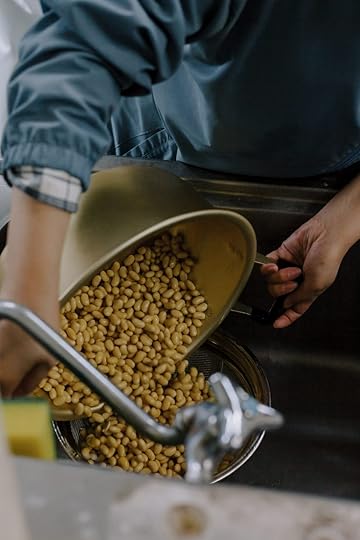
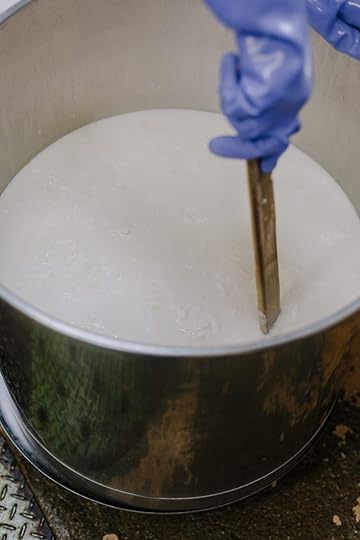
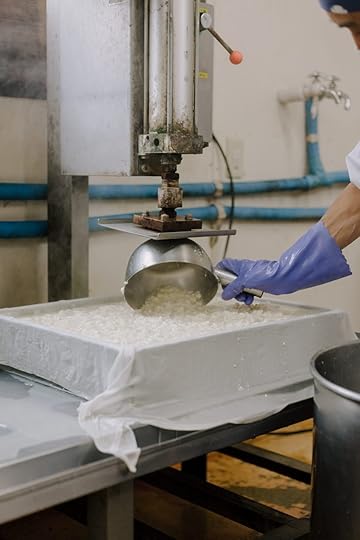
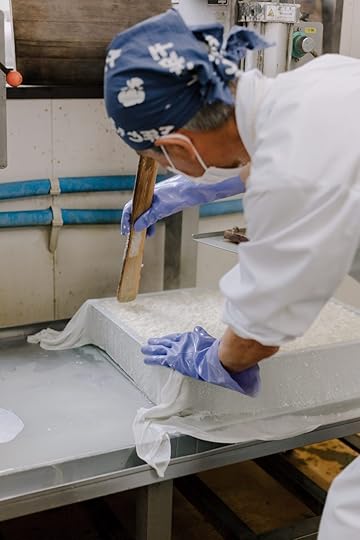
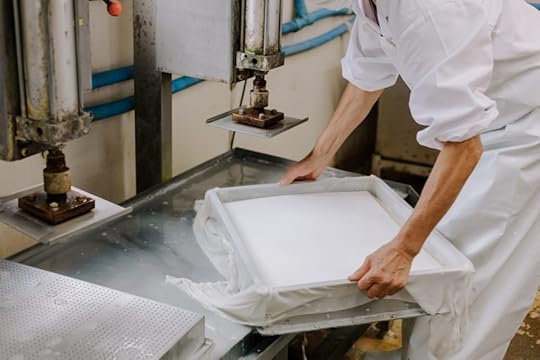
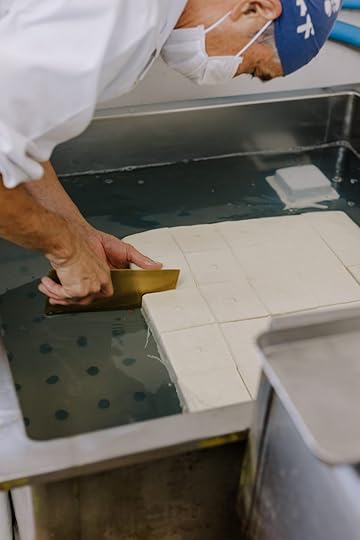
Fresh homemade tofu — what you need
Note that you will need some specific tools to make tofu: a candy thermometer, cheesecloth, a wooden tofu mould (about 18×18 cm) which has removable sides and holes in the bottom (something along the lines of this one), or a makeshift equivalent (a strainer could do the job but you will have a round tofu instead of a block), even a cheese mould could do the job. If you have a precision scale, great, as measuring the nigari can be tricky even with a regular digital scale and a teaspoon is approximate but because the form of the nigari salt can be irregular it isn’t very precise – note if you add too much you will have a firmer tofu. Nigari can be found in health food shops or specialty shops.
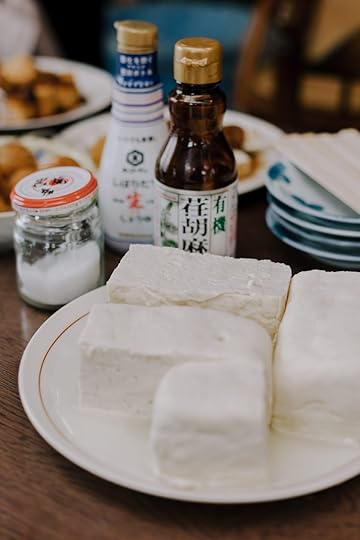
Fresh homemade tofu
A recipe from my latest cookbook Gohan: Everyday Japanese Cooking
You need to begin a day ahead to soak the beans. In preparation for making tofu, have ready a fine-meshed strainer, a large, heavy-bottomed saucepan, a spatula or wooden spoon and a tofu mould (like this wooden one, or simply put a strainer set over a bowl), which should be prepared with a damp cheesecloth laid carefully over it.
Makes 6 servings (500 grams) tofu
400 grams dried yellow soy beans2 litres of spring or mineral water, if possible3 grams nigari salt (about 1 teaspoon) or 30 ml liquid nigariRinse the soy beans and place in a large bowl with plenty of water to soak for a day. Continue topping up with water if you notice there is not enough to cover them.
Drain the soy beans and now measure out 2 litres (8 cups) fresh water – consider using mineral water for the smoothest result. Blend the soybeans with the water until very creamy – you may need to do this in two batches. Pour the puree into a large, heavy bottomed saucepan and heat over medium heat. You will need to stir slowly as it heats to a simmer to make sure there is nothing getting stuck or burnt on the bottom of the pot. Skim off the froth on the top of the puree. Continue cooking and stirring until you have a consistency like a runny polenta, about 15 minutes.
Now you will need to separate the soy milk from the pulp with a cheesecloth-lined strainer or just a fine-meshed strainer, over a pot. Push as much liquid as you can from the mixture – the pulp, known as okara can be set aside and used in a warm salad (or doughnuts!).
Check the temperature of the soy milk, it should be between 75ºC and 80ºC and if it is cooler than this, heat it back up gently. If it is too cool, it won’t set and if it is too hot it will be too hard, so checking with a thermometer is best.
In the meantime, prepare the nigari solution. Often nigari comes as a clumpy, wet salt, or you may also be able to find it in liquid form. As a salt, it should be dissolved into some water. It isn’t so important how much water you add – the salt doesn’t interact with the water, only with the soy milk, the water will be pressed out of the tofu later. But for this amount, about 2 tablespoons of water should be enough.
When the soy milk is the right temperature, add the nigari and slowly, briefly stir through the nigari. Cover and let the soy milk sit for 3-5 minutes, then slowly stir with a spatula to the bottom of the pan. You should see the curds, or oboro now, be careful not to break them up. Cover and let sit a further 3-5 minutes.
Note, during this time waiting for the oboro to form, the soy milk should be kept warm, ideally it should still be at the same temperature so be mindful of this when you choose the pan and what the temperature is of the room; if it is cold, for example, the temperature can drop in the pan too and the oboro may not form well. But tofu-making is forgiving, you can simply heat the pan again if this has happened. You can even add a bit more nigari if you suspect that you didn’t add enough the first time. Just keep in mind that too much heat or too much nigari will result in firmer, harder tofu, which you should try to find a balance for – ideally this homemade tofu should be a slightly firm tofu but with a soft, fluffy texture. What you are looking for after the second rest is for plenty of oboro and the liquid around it (yu) should now be turning transparent rather than opaque. If it hasn’t yet become transparent, give it a gentle swirl, then put the lid back on and wait a further 10 minutes, then check again.
Now you can carefully scoop the oboro with a slotted spoon or similar into the cheesecloth-lined tofu mould. Fold the cheesecloth carefully and neatly back over the top of the tofu so it is fully enclosed, then with the wooden top of the frame (or an equivalent if using a makeshift mould, a plate for example), press firmly and hold for a minute or so to remove most of the excess liquid. You can keep pressing with your own weight for several more minutes or you can place a weight on the top of the tofu – 2 tins of tomatoes for example would be ideal – for about 10 minutes. The harder and longer you press, the firmer the tofu. So adjust as you wish.
Remove the frame and place the whole block of tofu in a deep container filled with cool water and unwrap the cheesecloth gently. You can now slice the tofu into serving-portion blocks or if you used a sieve and have an odd-shaped piece, you can cut it into smaller cubes – use a sharp knife and a slicing motion rather than pushing down onto the tofu for the best cut. Enjoy it immediately or store the tofu in this water in an airtight container in the fridge for 3-5 days. Tofu also freezes well.
How I like to eat tofu (Chilled tofu or Hiyayyako)
Fresh tofu like this needs only a few toppings — my favourites are a bit of grated ginger, some finely sliced green onion (or myoga or shiso if you can get these!), katsuobushi flakes, toasted sesame seeds or some finely sliced cucumber, and finally a splash of soy sauce over it all.
Excerpt from my latest cookbook, Gohan: Everyday Japanese Cooking (Smith Street Books, September 2023), where the full Hiyayyako recipe actually has 5 different topping suggestions!
The post Homemade tofu recipe from the mountains of Nagano first appeared on Emiko Davies.
July 21, 2023
Introducing Gohan: Everyday Japanese Cooking
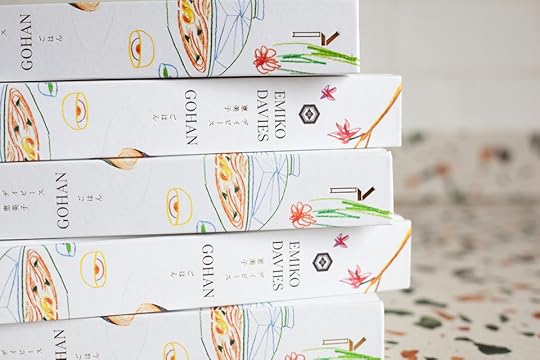
My latest cookbook, Gohan: Everyday Japanese Cooking: Memories and Stories of my Family’s Kitchen, will be out 12 September 2023 in the US, 14 September in the UK and Europe and 1 November in Australia.
It is a book I have been longing to write for many years, made up of a collection of my most favourite ever, nostalgic recipes of the Japanese home cooking that I grew up with.
It’s so very special to me that this book will be making its way out there in the world this autumn. It’s not just because it was a book that was originally turned down, or that it is sprinkled with old family photos and stories of the fascinating (and I think relatively little known) culinary history of Japan (like the 1,200 year old ban on meat that was only lifted 200 years ago, the Buddhist history of noodles and more), but the other thing that writing and researching this cookbook has done is it has opened up a deep exploration of my heritage that I think I have been suppressing since as long as I can remember.
But this is my soul food. This is the food I was born to crave. I may not speak Japanese fluently, but the food is the food I love most in the world. Being the first born of a Japanese mother, newly arrived in Australia as a young 20 year old, I am hardwired to with a preference for Japanese flavours and textures, with a love of the sharpness of rakkyo (pickled Chinese onion), the saltiness of umeboshi, the creamy bite of raw squid, the umami of dashi and a predisposition for a deep appreciation of tofu and anko (sweet red bean paste), the soul of all my favourite Japanese sweets. I would give up all the chocolate in the world for it.
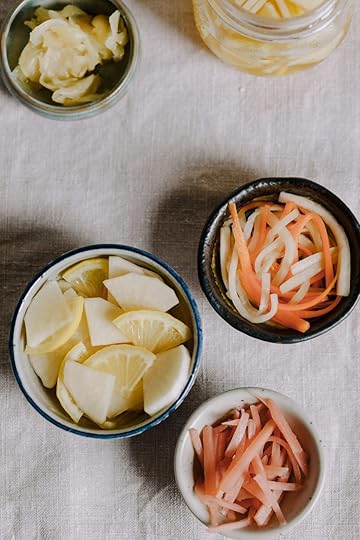
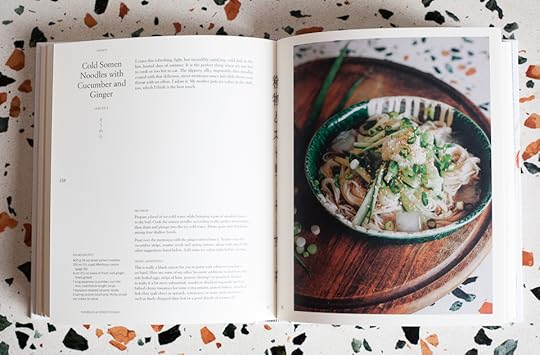


This is what truly tastes like home to me. It is every day, home cooking: simple dishes, based on peak season foods, that my Japanese mother and grandmother made. The favourite bites and flavours from all our annual trips to Japan as a child and teenager, like onigiri, or the fried prawn sandwiches that remind me of my grandfather.
Here below I wanted to share a little interview that my publicist sent me to answer and I think the responses can help you get to know Gohan a little better too. I hope you enjoy it and if you’d like to pre-order Gohan now, it is such an enormous help for authors as it lets their publishers know that this is a book worthy to print (and keep printing)! Thank you in advance for all of your support.
Get to know Gohan, an interview with Kat Purcell and Emiko Davies
What dishes are quick to put together?
I wanted this cookbook to show people the very simple nature of Japanese home cooking. Things from the pickles (which are not only quick to make, 10 mins, but quick to pickle too — you can eat them after only a few hours of marinating), Dashi (the backbone of all the soup, sauce or stewed dishes, equivalent to a stock), only takes 10 minutes, the cold tofu (just add your favourite toppings and it’s ready in minutes), most of the vegetable dishes, in particular things like green beans with sesame, mushrooms with tofu sauce (these can be made with any vegetable as the base), miso soup (handful of minutes!), the clam soup (mere minutes too), are super quick.
Aside from the homemade tofu, everything in the breakfast chapter can be whipped up in under 10 minutes (many in 5). The egg and rice dish (tamagonogohan) is my go-to when I’m tired and hungry and takes about 3 minutes to cook (you use already cooked rice). Both the salmon and beef rice bowl take minutes to put together too (not counting the cooked rice, which if you’re doing in a rice cooker or if you’ve got it in a saucepan, is already being taken care of). The vegetable chapter too is a collection of quick dishes — salads that can be done in under 10 minutes, warm dishes that take only a few minutes to cook. Even the more involved dishes, like the Okara salad, only requires about 7 minutes of cooking time. I think the longest preparation in that chapter is the pumpkin braised in milk and that takes 20 minutes. Dishes like the cold somen noodles are just thrown together in minutes; yakisoba too — very quick. Yakitori only takes 10 minutes to cook.
Meanwhile, dishes like sukiyaki and te maki are wonderful too because you only need to chop and put things on a platter and the cooking (for sukiyaki) is done at the table together, while te maki is mostly raw. Even the Japanese curry from scratch is done in less than 30 minutes. In the sweets chapter, the kanten jelly is so quick — to make and to set. In 10 minutes it’s ready to eat, unlike traditional gelatin jellies. Arrowroot mochi takes only minutes to make too.
What makes them simpler than Italian cooking?
Japanese cooking is about preserving nutrients and flavours as much as possible so cooking times are quick because of this. It is, more even than Italian food, entirely dependent on ultra seasonal produce (I have a section about “shun”, the joy of peak of seasonality on page 113 — bookmark it for later! — so food is already at its most flavourful and you don’t want to ruin this beautiful produce by changing it too much, adding too many things or long cooking. Italian cooking on the other hand is about low and slow cooking to bring out flavours — think of the best ragu, which has been cooking for at least 3 hours, a day before you want to serve it. Or stewed white beans and hearty beef stews, which were traditionally cooked in front of the fireplace so they would take hours to cook (the beef because it was also very tough and needed hours of cooking to tenderise it). Japanese cooking is, by nature, fast cooking.
Which dishes are family favorites?
Well I have an entire chapter called Family Favourites  but to be honest, the entire book is! These are literally all of my favourite things from my childhood and adolescence, each and every recipe. But the Family Favourites chapter might be the top ones (and ones I think other families/groups of friends will love). The other dishes that are particularly special and personal to me are my grandmother’s clear clam soup and her lotus root and carrot kinpira, cold tofu with various delicious toppings for breakfast, my mother’s tamagonogohan (stir fried egg and rice), the fried prawn sando that reminds me of my grandfather and absolutely everything red bean.
but to be honest, the entire book is! These are literally all of my favourite things from my childhood and adolescence, each and every recipe. But the Family Favourites chapter might be the top ones (and ones I think other families/groups of friends will love). The other dishes that are particularly special and personal to me are my grandmother’s clear clam soup and her lotus root and carrot kinpira, cold tofu with various delicious toppings for breakfast, my mother’s tamagonogohan (stir fried egg and rice), the fried prawn sando that reminds me of my grandfather and absolutely everything red bean.

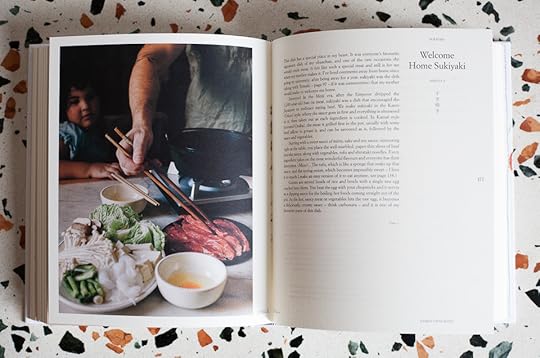
I like that you substitute ingredients so home cooks can use what they have on hand.
This is all about home cooking and so the important thing for people to know is that they can use whatever is on hand. I try to give substitutions on most of the recipes — and I especially have tried to make this book accessible for vegetarians and vegans. There is this thought that Japanese cuisine is difficult/impossible for vegans/vegetarians because of the use of dashi and fish-based flavours. But starting with the Dashi itself, I give easy vegetarian substitutions (use kombu alone, the king of umami, you just leave out the katsuobushi), and so much of Japanese cuisine is vegetarian naturally (or pescatarian) — as you’ll read about in the book on page 16, meat was banned in Japan for 1,200 years!
What are some common substitutions from one season to the next?
At the beginning of the vegetables chapter I have a run down of some of the favourite vegetables you’ll see in Japanese cuisine, this is a tiny selection obviously but gives people an idea of what vegetables you can use for a more “authentic” flavour. But many of the dishes (being home cooking) are simply about using what you have on hand and what is in season. For example, the seasoned okra dish is one my Obaachan (grandmother) would make usually with spinach, but in the summer, I think okra is a really nice version (said to also help keep you cool in hot weather); the sesame dressing in the green bean dish is also one that you can do with any vegetables that are seasonal — delicious with just grated carrot, blanched broccoli or snow peas too. Miso soup as well is highly seasonal, so any vegetables (or fish or tofu) you decide to put in there can reflect that — kabocha pumpkin in the autumn is one of my favourites, daikon and napa cabbage in the winter are so comforting too.
Did you learn this from your Obaachan?
I learned this from noticing everything on Obaachan’s table, I recognised how she would make the same kind of preparations with different vegetables, and I always looked forward to every meal she cooked, each variation, paying close attention to what she had made. I also learned about different flavours with my grandfather — he didn’t cook but he loved food and we had the same tastes, the same preferences for things like sharp rakkyo pickles, sweet, chilled mochi and salty grilled fish roe gobbled up with rice. My mother too was the queen of using what was on hand to make a delicious meal, substituting always this or that for something she would have used in Japan. She was cooking for me mostly in Australia (or China, where we lived for 8 years), but it was in Australia where not always was it easy to get the exact same ingredients.
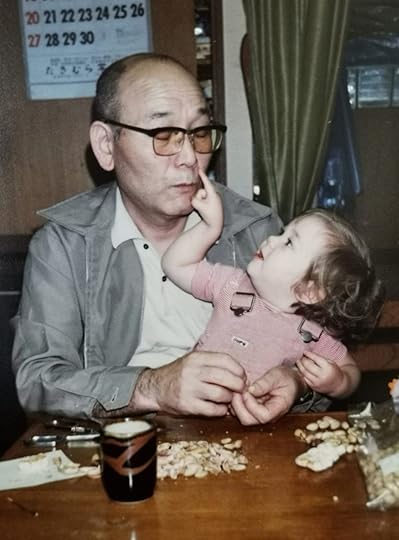
What lessons about home cooking did you learn as a young girl/woman?
I learned so many things. First, that cooking is a direct link “home” — my mother cooking her mother’s food was a way to imagine we were at my grandmother’s table, far away in Japan. That cooking at home is a joy, that you can open the fridge or go out into the garden and get inspired right then on the spot to make something based on what you have around you. Living in Australia and China we didn’t always have access to the “right” ingredients but my mother always made sure to bring back certain things with her from trips in Japan so that we could have our favourites. And even without those things, with a limited pantry of just the very basics, you can make many, many wonderful dishes that satisfied all my cravings for my Obaachan’s food.
What are the most essential pantry staples to have on hand?
This is a common question I have already been asked a lot! So I have written a whole section on this in the introduction, you’ll find it from page 19 — “On ingredients” and “My essential Japanese Pantry”, where I talk about the bare minimum needed. Living in Tuscany where it’s not easy to get foreign ingredients, I cook a lot with just this bare minimum — a handful or two of ingredients: soy sauce, kombu and katsuobushi or at least some dashi powder, proper Japanese rice (of course), miso paste (I’ve just learned to make my own from Yuki’s kitchen in London, she does online classes), rice vinegar for sushi rice and pickles, Japanese sesame oil — this one isn’t super essential but it is one of my favourite flavours ever so I always have this!
Your Japanese background is interesting (especially since you grew up in Australia and traveled a lot). Was Japanese food important to your family? How did your parents keep Japanese traditions alive? How did your peers view your heritage?
Very important. Growing up, my mother cooked for us every day (we rarely ever ate out) and she cooked all kinds of things but we all — my father, my siblings and I — loved Japanese food, me in particular most of all. I think it’s quite natural for her to want to cook her own food for herself and her family whenever she could. She still does. It’s the Japanese dishes like sukiyaki (that I call “welcome home sukiyaki”) and te maki that she knows are the family favourites that she makes for us when I arrive home from being overseas (I’ve lived overseas, far, far away from my family since I was 17 years old). It’s a love language. I get the feeling that she also feels out of balance when she doesn’t have Japanese food for a while and craves it. At least I know that I feel like this sometimes too. My mother also took my siblings and I to Japan every year as kids — we would spend a good portion of our school holidays visiting my grandparents. When I was 12 I even stayed for a whole summer by myself, I flew over alone, and stayed with my grandparents and when we moved to Beijing, we were even closer so it was easier to visit.
This is your first Japanese cookbook, tell me more. Why now?
To be perfectly open about this, I put this cookbook proposal through in late 2019 and I believe it was turned down on account of the sales team convincing the publisher that Asian cookbooks are not as sellable as Italian cookbooks, which I found problematic, racist, not to mention hurtful. Ironically, they also cited that they didn’t need my book as they were publishing Japanese cookbooks already so they had enough (written by a white chef, of course). But them turning it down meant that I was free to take this book to a new publisher and I’m thrilled to find Smith Street Books was as enthusiastic about it as I was (full circle moment, my new publisher was actually my very first publisher, who I signed my contract for Florentine with back in 2014).
Why now? I think that many things have happened between 2020-2023 that have allowed more diversity in food media beginning in the US — for Asian voices in particular, especially after events that led to the Stop AAPI hate movement, for example. But I personally think that this book would have been well received even before all of this, and I could have found a new publisher earlier but I had honestly lost my confidence and felt a bit lost — I had planned to visit Japan in March 2020 to do more research on the book and strengthen my proposal with new photos, then the pandemic hit and I shuffled it away. Then books came out like Hetty McKinnon’s To Asia With Love and Eric Kim’s Korean American — where finally these favourite authors of mine wrote about their own heritage and these books have had enormous success.

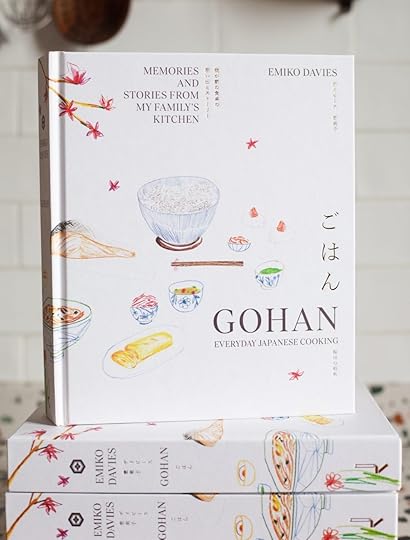
Photographs are mostly by me, but also my sister Hana Davies contributed and did ALL the post processing of the photographs, including the old family photos and Yuki Sugiura, a London based Japanese photographer, did the step by step photos and many other beautiful images for several of the recipes. The location photographs were taken by me in Japan, September 2022, while the country was still in pandemic mode and not yet open to visitors.
Design and illustrations by the wonderful, uber-talented Evi O, an Indonesian-Australian artist and designer based in Sydney. This is the first time I have been able to choose my designer and I instantly picked Evi. I have long loved her work and her love of Japanese art and design I knew would be an interesting fit.
Editing, my project editor Hannah Koelmeyer, is half Sri Lankan, half Australian, and is someone I worked with originally with my first cookbook Florentine as well. She’s the best.
Gohan: Everyday Japanese Cooking published by Smith Street Books, Melbourne, in September, November 2023. Pre-order here.
The post Introducing Gohan: Everyday Japanese Cooking first appeared on Emiko Davies.
June 14, 2023
Join me in Venice on the Lagoon Workshop May 2024
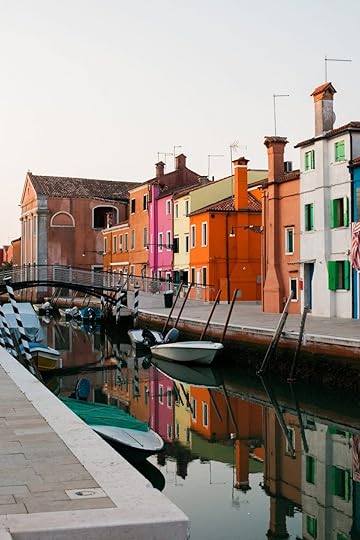
VENICE — The Lagoon Workshop, 2-7 May 2024
I’ve only been back from the Venetian Lagoon Workshop for a month (read more about the trip here if you missed it) but every time I spend time on the lagoon it leaves a mark on me and this time I’ve decided to try to keep that magic by staying even longer on the lagoon and adding more of the lesser known islands onto the itinerary. We will be well off the beaten track in this workshop that keeps growing — for 2024 it has become a 5 day Venetian lagoon extravaganza.
We will stay in colourful Burano, dine in some of the most wonderful restaurants on Burano (this Anthony Bourdain episode of No Reservations in Burano will get you in the mood), including Michelin starred Venissa and charming Locanda Cipriani on ancient Torcello island. We taste wine made on the lagoon (this time I have roped my sommelier husband into coming to give a Venetian wine lesson to us as well!), all over the various islands, visit artisans making lace and glass, explore the gardens of Sant’Erasmo island by bike and spend a day with a crab fisherman cooking for us on his boat. You will be swept off your feet by this, I promise!
Note that we won’t be spending any time on Venice itself during this workshop because I just don’t want to disturb the magic of the lagoon that you’re going to experience so if you do want to plan some time there, take a look at this mini guide of a neighbourhood I’m particularly fond of.
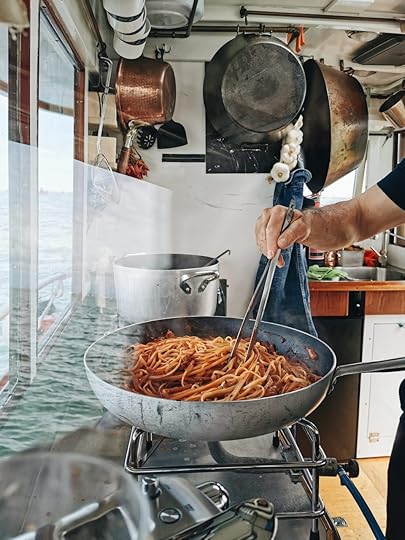
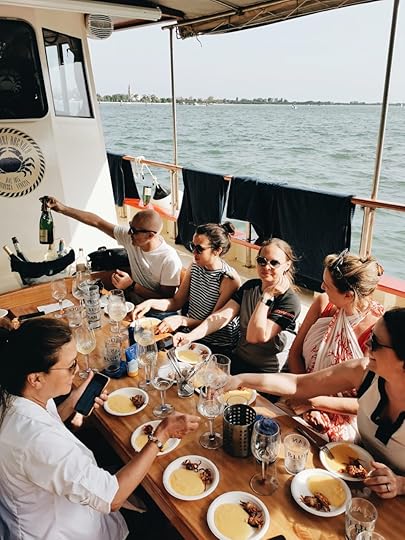
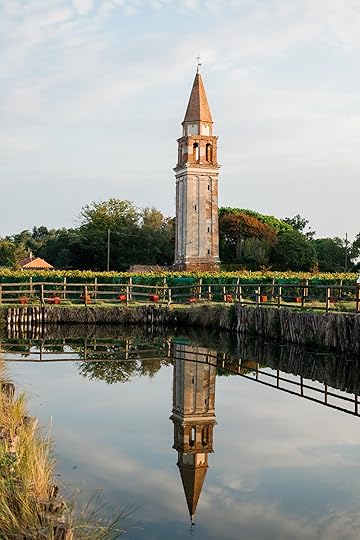
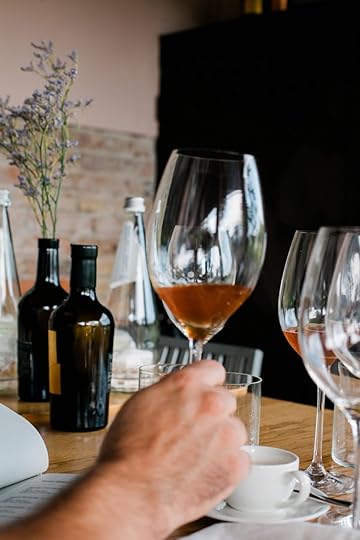
The Program
Day 1: The meeting point is at the Venice train station in the afternoon, where a taxi boat will elegantly take us to Burano. After check in, we’ll kick off the workshop with a visit to the walled garden of Venissa, where they grow vegetables and have revived a rare and ancient Venetian grape, for a wine tasting (read more about this incredible project here at Wine Spectator). We’ll then head for dinner at their Michelin starred restaurant inside Venissa.
Day 2: After breakfast, the day will be spent exploring colourful Burano with its rainbow coloured houses. We’ll stop at a famous local lace atelier to witness one of the last surviving arts and crafts of the lagoon and lunch will be at a new favorite which has recently opened and is led by a young and inventive chef. We’ll spend the afternoon preparing cicchetti paired with a selection of natural wines curated by my husband and sommelier Marco, who will be with us for the first two days of the workshop.
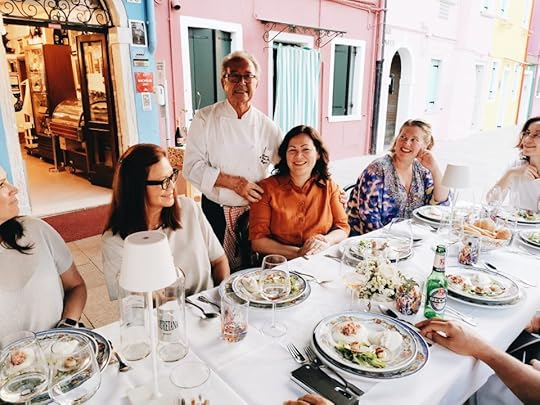
Day 3: On board the traditional and luxurious wooden venetian taxi boat we’ll head to the island of Murano to visit a glass factory – never open to the public – behind closed doors, in the company of the owners. We’ll then go for a leisurely stroll of the island before heading for lunch at the iconic Locanda Cipriani – chosen by Kings and writers alike – in magical Torcello. We’ll visit the church, a wonderful house-museum owned by an artist and return to Burano in the afternoon. Dinner will be at the fantastic restaurant Gatto Nero in Burano.
Day 4: We will take a converted fishing boat with fisherman Manuel Bagnolo to visit the southern side of the lagoon towards the salt marshes and the last of the moeche (crab) fishermen, before enjoying aperitivo and lunch on the boat anchored in the middle of the lagoon. After a three course lagoon seafood meal that has been fished by Manuel and his family, we will visit the abandoned islands in the north of the lagoon (anyone who wants to visit one or jump in for a brave swim can do so!), while Manuel tells us his stories.
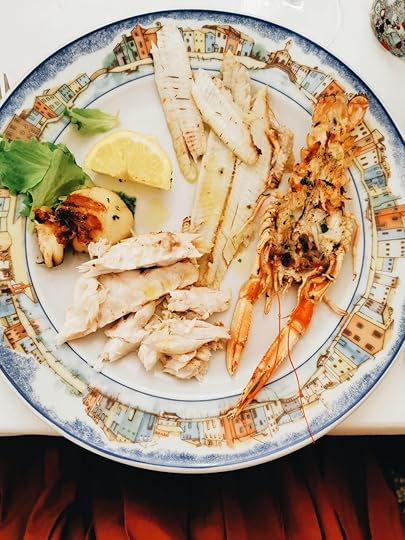
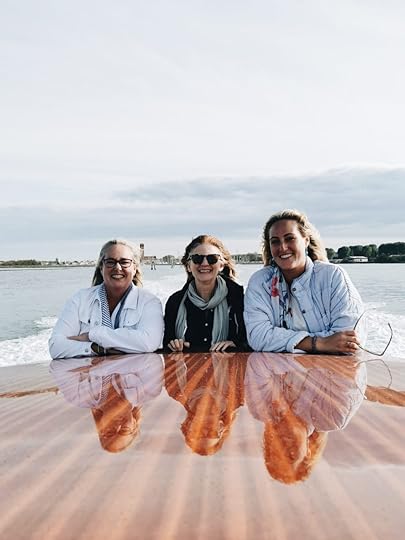
Day 5: On board a traditional fishing boat called Bragozzo, we’ll set sail again and visit the island of Sant’Erasmo – called the Orchard of Venice: just think that since the Middle Ages this strip of land wrested from the waters has been growing fruits and vegetables to supply the city. Even then, the slow pace of the island contrasted with the traffic and chaos of commercial Venice, making Sant’Erasmo a peaceful floating corner of countryside. We’ll rent bikes and explore the islands vegetable patches and have lunch with the organic produce of a very special Farm. After lunch, we’ll head to another nearby island for a unique wine tasting led by an association I wrote about in Cinnamon and Salt called Laguna nel Bicchiere, Le Vigne Ritrovate — they collect grapes from all over Venice and the lagoon (Giudecca, Malamocco, Vignole, for example) and make wine from it on the Isola San Michele, where you’ll also see the 16th century cellar, the one used by the friars of the convent. Dinner will be at the Osteria Contemporanea, the more informal but just as wonderful restaurant of Venissa estate.
Day 6: Almost time to say goodbye. After check out, one last lunch at Trattoria la Maddalena, a local favourite and slow-food endorsed restaurant in Mazzorbo. Once we finish lunch, we’ll have a taxi boat swiftly bring us back to the Venice train station for departures.
The full brochure and registration details for the Lagoon Workshop can all be found HERE and you can email cinnamonandsaltretreat@italysegreta.com to book your place.
[image error]
The post Join me in Venice on the Lagoon Workshop May 2024 first appeared on Emiko Davies.
May 28, 2023
My ultimate panna cotta
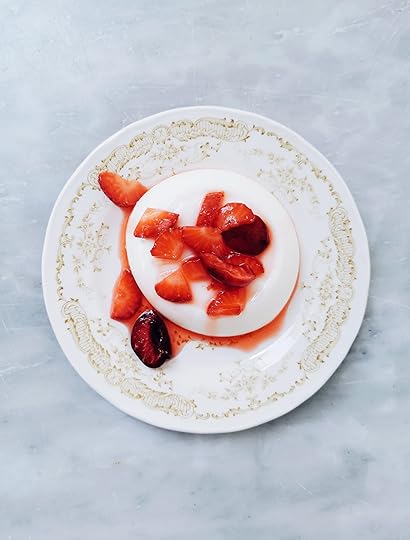
This is one of those dishes I avoid ordering because I’m always worried it’s not going to live up to how good it could and should be. The ultimate panna cotta should have the perfect wobble — this is an indication of the texture, which should be silky, creamy, melt in the mouth but not too bouncy or rubbery. I’d rather a panna cotta that is more wobbly than too set, personally. I’ve made panna cottas that you can bounce off the wall in the past, so believe me I’ve come a long way in experimenting and recipe testing to get to this final recipe that I love!
Panna cotta should also be creamy but also not too rich, I think, so I like to use a mixture of half milk, half cream, which gives a delightfully creamy texture but is not over the top rich. I also like a tiny bit of yogurt, which I feel gives it a nice, welcome hint of acidity (you could easily leave it out, otherwise you could use buttermilk perhaps instead of the milk and yogurt — I don’t find this easily in Italy but I think it would similarly give a nice flavour and bit of tang).
Think of this dessert as a blank canvas to which you can add your favourite aromas and toppings — in fact, panna cotta, or “cooked cream” is not an ancient dish but one that was invented, they say, in the 19th century. I think this gives it a little more leeway for creativity without people having to get up in arms over the “correct”, “traditional”, codified recipe. Piemonte lays claim to the origins of panna cotta but it’s not all perfectly clear so it’s become diffused over pretty much all of Italy, today you will even find that it is often made with a box mix from the supermarket! But you’ll see once you try it how really, really simple it is to prepare and how much more delicious it is when you make it yourself with these little tweaks that bring it up a notch.
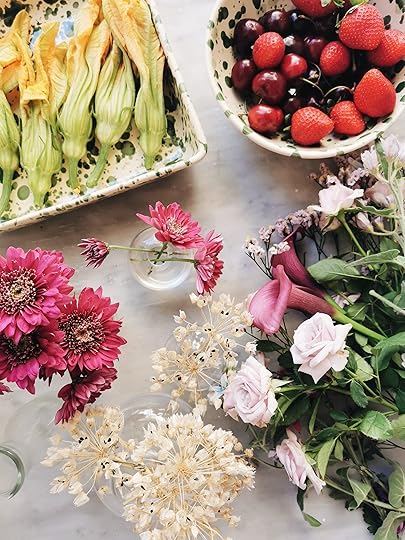
Going back to this being a blank canvas, feel free to add vanilla, or lemon zest, or infuse the cream with some spices (cardamom? cinnamon?). I like to leave it quite simple and play with the topping — my favourite is just some seasonal, fresh fruit that has just been macerated in a bit of sugar and lemon juice. I’ve been making these in our market cooking classes in Enoteca Marilu with whatever seasonal produce is available — strawberries, cherries, peaches, figs, they’ll all be delicious.
If you want to bring out their flavour (and colour), you can cook them a little bit too — plums would be wonderful this way, just put the same mixture in a small saucepan and cook over a low heat, stirring, with a splash of extra water, until the fruit is a little softer and the colour and flavour deepens, about 5-7 minutes.
Note: If you don’t eat pork or are vegetarian, unfortunately this dessert is not for you. Panna cotta is made with gelatin, which is an animal product. In Italy although it is often called colla di pesce, it is not derived from fish but from pork.
My ultimate panna cotta
Makes 5
For the panna cotta:
6 grams gelatin sheets (colla di pesce in Italian)
250 ml (1 cup) cream
375 ml (1 1/2 cups) milk
1 heaping tablespoon natural yogurt
3 tablespoons sugar
Fruit compote:
250 gr strawberries, cherries or other fresh, ripe fruit
1 tablespoon sugar (or to taste)
juice of 1/2 lemon (also the zest if you like)
For the panna cotta, first soak the gelatin sheets in a bowl of cold water for 5-10 minutes to let them soften.
In the meantime, heat the cream, milk, yogurt and sugar together until the mixture is steaming but don’t let it come to a boil. Stir to help dissolve the sugar, then take off the heat, squeeze out the gelatin that you’ve had softening in a bowl of water and add it to the cream mixture. It should disappear like magic. Let the mixture cool slightly (if you’re in a hurry it helps to transfer this to another bowl), this is so the mixture sets in a more homogenous way. Pour or ladle the cream mixture into ramekins and set in the fridge for at least 3-4 hours or until set. I like to do this the night before if possible. If it looks too wobbly still, you just need to be a bit more patient and let it set longer.
While waiting, cut up the fruit into small pieces (remove stalks or pits or seeds if necessary) for the topping and marinate with the sugar and lemon juice until needed.
To serve, it helps to have a bowl of very warm water nearby to dip the bottom of the ramekins in — this will melt the gelatin so it slips out easily. Word of warning, though, if you hold it in the warm water for too long you will have also some extra liquid cream come out on the plate too! Tip onto plates and top with a spoonful of fruit. Alternatively you can serve the panna cotta in the ramekins themselves, just top with the fruit and it’s ready.
The post My ultimate panna cotta first appeared on Emiko Davies.
February 2, 2023
A pampering stay in Sicily’s south – Adler Spa Resort Sicilia
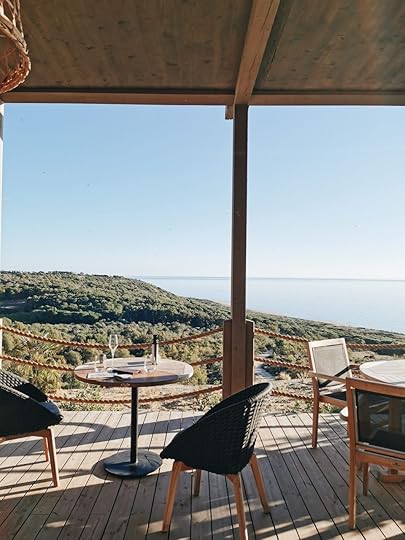 “To have seen Italy without having seen Sicily is not to have seen Italy at all, for Sicily is the clue to everything. The purity of the contours, the softness of everything, the exchange of soft colours, the harmonious unity of the sky with the sea and the sea to the land… who saw them once, shall possess them for a lifetime.”I couldn’t help think of this Goethe quote while I was soaking in the sunset views from the corner of Sicily where Adler have their latest resort, Adler Spa Resort Sicilia, perched on a nature reserve in Agrigento province. I’d never before been to this part of Sicily — the south coast near the town of Siculiana and not far from the ancient temples of Agrigento, all an easy, 1 hr 45 minute drive from Palermo airport. The wide open skies filled with birds, the sea quietly glistening down below and nothing else but views of the wild nature reserve around us — it felt like a very special treat to have this corner of Sicily all to ourselves.
“To have seen Italy without having seen Sicily is not to have seen Italy at all, for Sicily is the clue to everything. The purity of the contours, the softness of everything, the exchange of soft colours, the harmonious unity of the sky with the sea and the sea to the land… who saw them once, shall possess them for a lifetime.”I couldn’t help think of this Goethe quote while I was soaking in the sunset views from the corner of Sicily where Adler have their latest resort, Adler Spa Resort Sicilia, perched on a nature reserve in Agrigento province. I’d never before been to this part of Sicily — the south coast near the town of Siculiana and not far from the ancient temples of Agrigento, all an easy, 1 hr 45 minute drive from Palermo airport. The wide open skies filled with birds, the sea quietly glistening down below and nothing else but views of the wild nature reserve around us — it felt like a very special treat to have this corner of Sicily all to ourselves.In early November the weather was divine. We started the mornings at breakfast overlooking the sea — how could I go past the pistachio gelato with housemade brioche? The girls preferred cereal and freshly made eggs. They then ran to the kids club, where they spent every moment they could, making bracelets, going for walks on the beach, even going to movie nights there after dinner and spotting the local friendly fox that comes to visit! It was hard to pull them away but I did entice them with a chocolate scented kids massage. We spent every day in the warm and cool pools — even in November! The Thalasso pool in particular was a treat, especially after a relaxing massage and some time in the sauna.
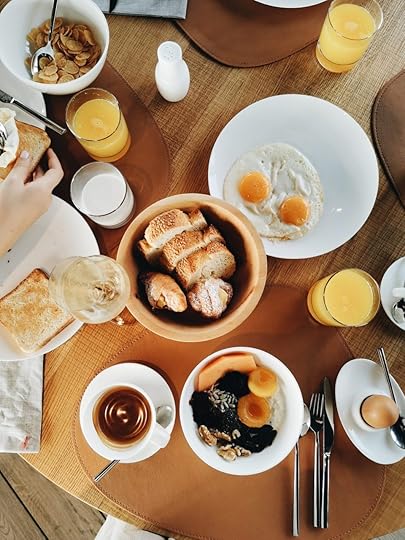
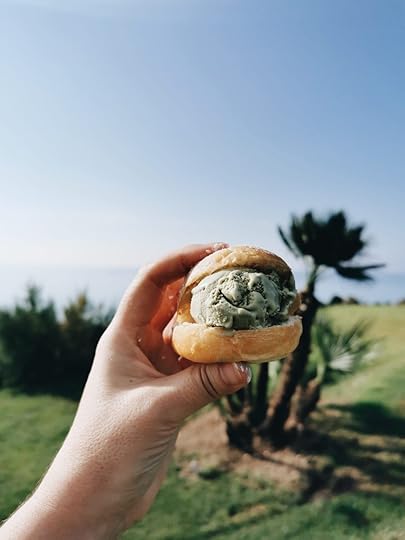
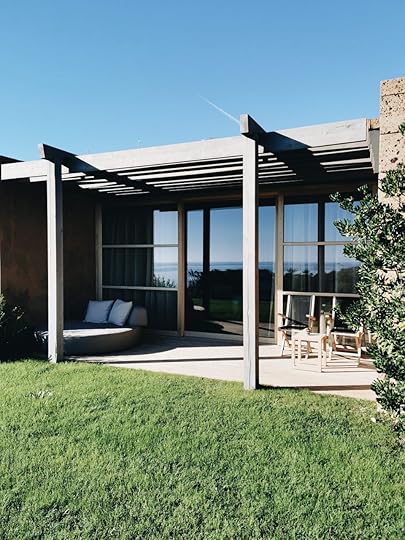
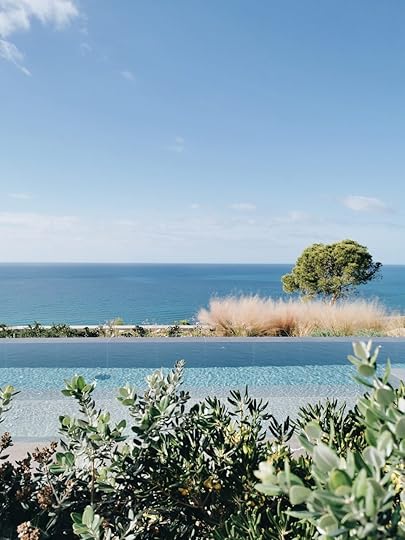 One of the things that Adler does so well (you can see here some of our other visits to their Tuscan spa and two of their Dolomites spas, Ortisei and Ritten) is offering complimentary activities for guests to join in on throughout the week. Even though I could have happily soaked in the pool every day all day, my curiosity was too great and so I went on a tour to visit the charming local town of Siculiana and managed to fit in a session of sunset yoga on the beach — such an incredible, special location, with no one else around at all, and a wonderful class of long, deep stretches. If I had had some more time (or had brought the right shoes!) I would have tried one of the hikes in the area, which is full of beautiful views and history that can only be reached on foot.We loved heading to the bar in the evenings for an aperitivo and a game of Monopoly or just listening to the live jazz music before dinner. This being Sicily, the food was delicious — very fresh seafood and local specialties like arancini and busiate pasta were particularly wonderful. Every night there was a completely different menu, which was refreshing but also — if you see something you like, don’t hesitate, live in the moment and order it while you can!
One of the things that Adler does so well (you can see here some of our other visits to their Tuscan spa and two of their Dolomites spas, Ortisei and Ritten) is offering complimentary activities for guests to join in on throughout the week. Even though I could have happily soaked in the pool every day all day, my curiosity was too great and so I went on a tour to visit the charming local town of Siculiana and managed to fit in a session of sunset yoga on the beach — such an incredible, special location, with no one else around at all, and a wonderful class of long, deep stretches. If I had had some more time (or had brought the right shoes!) I would have tried one of the hikes in the area, which is full of beautiful views and history that can only be reached on foot.We loved heading to the bar in the evenings for an aperitivo and a game of Monopoly or just listening to the live jazz music before dinner. This being Sicily, the food was delicious — very fresh seafood and local specialties like arancini and busiate pasta were particularly wonderful. Every night there was a completely different menu, which was refreshing but also — if you see something you like, don’t hesitate, live in the moment and order it while you can!It was a deeply peaceful and serene few days of being totally spoiled. The views, the wonderful food, the water, the pampering, yoga on the beach, the absolute peace of this secluded location on Sicily’s south in a natural reserve (not to mention the kids busy at the kids club!) — an absolute dream.
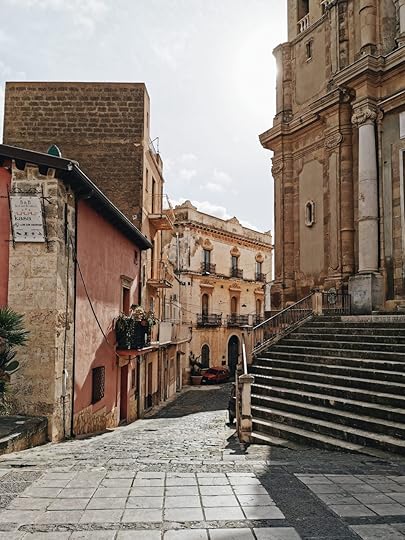
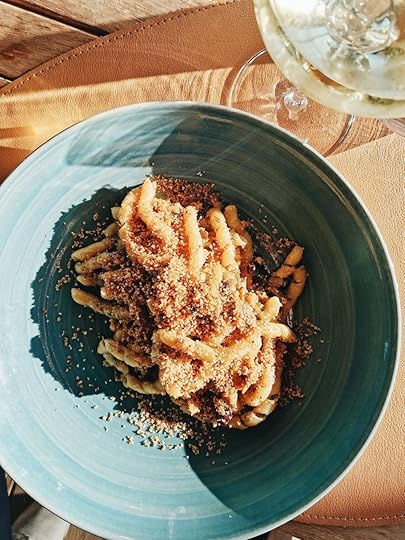
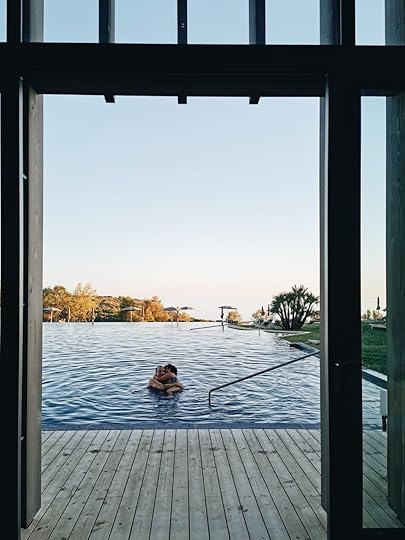
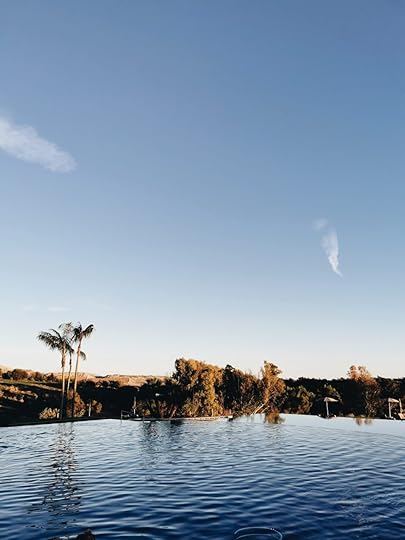
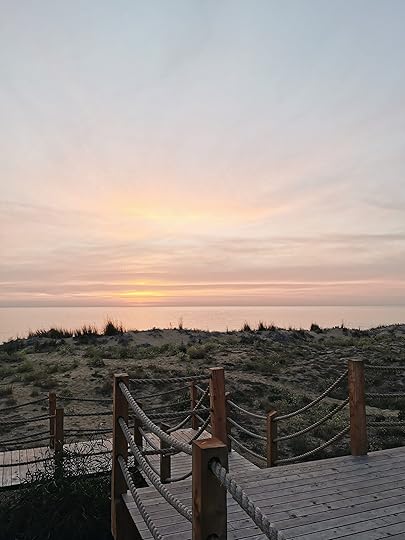
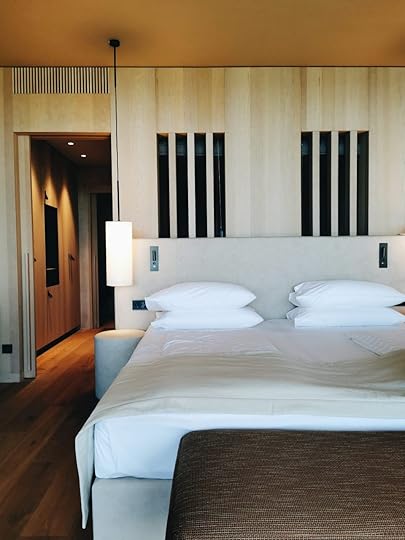
Disclaimer: I was invited to stay at Adler Spa Resort Sicilia with my family with most expenses covered; this is a truthful account of my experience here.
The post A pampering stay in Sicily’s south – Adler Spa Resort Sicilia first appeared on Emiko Davies.
January 26, 2023
Introducing our Seasonal Tuscan Workshops

Introducing our new 5 day Seasonal Workshops at Enoteca Marilu!
This is a dream project that we’ve been floating around since 2007, when we thought up an idea to host wine tastings on a medieval rooftop tower in Florence. We finally found our very own space to host cooking classes, wine tastings and a natural wine shop — right in the heart of Tuscany, in our little hilltop town of San Miniato. We’ve been renovating it for the past year (see some behind the scenes on our Enoteca Marilu Instagram account!) and it will finally be ready this spring!
If you’re not ready to commit to a 5 day workshops, we also offer one day cooking classes on most Tuesdays (market day!) of the year and wine masterclasses (May 4 for the first Wine Masterclass and June 15 for our Intro to Natural Wine class)! You can read about these classes here.
Let us show you the slow life of our charming Tuscan village, tasting the delicious fresh produce and wonderful artisans making bread, prosciutto, cheese and wine in this area in a small, highly curated and intimate workshop.
We start in the mornings, each day visiting the market, the local butcher, breadmaker or cheesemaker — or depending on the season, the beekeeper or the artichoke grower. We will also go hunting for truffles one morning in the woods nearby — black summer truffles, autumn white truffles and spring bianchetto truffles all grow locally to San Miniato and each have their own flavours, scents and ways they need to be treated in the kitchen. We will cook together, you’ll don an apron and get your hands dirty, learning about local traditions on the way. We eat and drink together, tasting wines chosen by Marco. Afterwards, in the late afternoon and evenings, you are free to go and explore or rest or catch up with family (if you’re traveling with others who are doing their own thing during the day) and sample one of the fantastic restaurants in town.
These seasonal workshops run from around 10am-4pm over 5 days over the following dates:
16-21 April 2023: Spring workshop
15-19 May 2023: Late spring workshop
5-9 June 2023: Summer workshop
4-8 September 2023: Late summer workshop
9-13 October 2023: Autumn workshop
14-18 November 2023: White truffle workshop
Who is this for?
It is for people who are curious to explore slow life in a small Tuscan village, who love good food and delicious wine, who want to connect with other people who love food and wine and learn more about the local small producers around here, while picking up some new skills and recipes along the way — it’s for you!

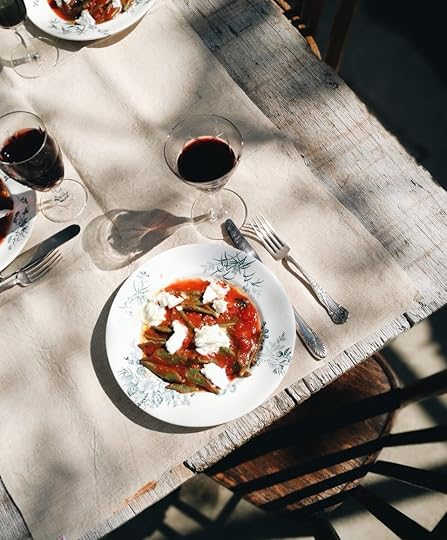
A Sample Itinerary:
Note that being seasonal workshops, there will be some slight changes according to the season; for example, in the spring we will also get to experience the most cracking, fresh, perfumed Tuscan artichokes — harvesting them ourselves right from the field and tasting them raw and in ragu or fried. Spring and summer are also a great moment for cheesemaking as the goats milk is ultra creamy and available (in the cooler months the ladies go on maternity leave). We might be able to visit local beehives in the warmer months too, where autumn is reserved for some very special Tuscan flavours, in particular prized white truffles, but also chestnuts and saffron fields which grow locally too.
Monday: Arrival day; after you have settled in, we will meet in the late afternoon for a tour around town to get your bearings, followed by aperitivo with nibbles.
Tuesday: We start with a visit to the weekly market to pick up ingredients and see what local produce grows in this area. Then we cook a meal of fresh pasta, two salads and a seasonal cake, which we will enjoy with paired wines.
Wednesday: This morning starts with coffee at the local pastry shop and a taste of some of their specialties, then we go to the kitchen for our own baking. A late lunch will be at a local biodynamic winery set in a beautiful 15th century estate with a vineyard visit and a tasting of their most important indigenous Tuscan wines.
Thursday: This morning we head to the woods for a truffle hunt (San Miniato is home to a variety of delicious truffles that are in season all year long). Back in the kitchen you’ll learn how to use truffles in savoury but also sweet dishes. We’ll enjoy these with paired wines chosen from Marco.
Friday: Today we leave the apron behind in the kitchen to visit a local ancient grain grower and baker, watching the bread come out of the wood fired oven and having a bread tasting (in season, we will taste their wonderful artichokes too). We will visit the mill where the grains are ground as well as the picturesque grain fields, then it’s a long, lingering lunch at our favourite countryside trattoria for the best Tuscan experience before we say goodbye.
The cost is 1,800 per person.
What is included in the price:
Three hands on cooking classes with an award winning cookbook author Emiko DaviesWine lessons and wine pairings with Tuscan sommelier Marco LamiTruffle hunt in the woods with a truffle hunter and his dog, plus an all-truffle cooking lessonA visit to a biodynamic winery on a 15th century estate with and lunch and wine tastingsTour of San Miniato and tastes around town — coffee, pastries and aperitivo!Visit of local farmers, producers, baker, butcher and other artisansLunch every day, including one out at our favourite trattoria in the countrysideTransport included for all the visits in the itinerary aboveDelicious natural wine and organic ingredients during mealsNot included in the cost:
Airfare and travel costs to the workshopAccommodationTravel insuranceTo book now email us at vino@enotecamarilu.com
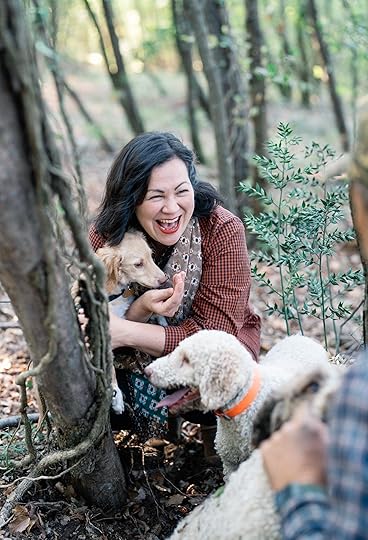
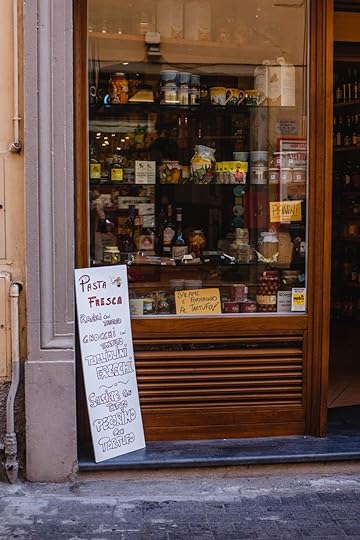
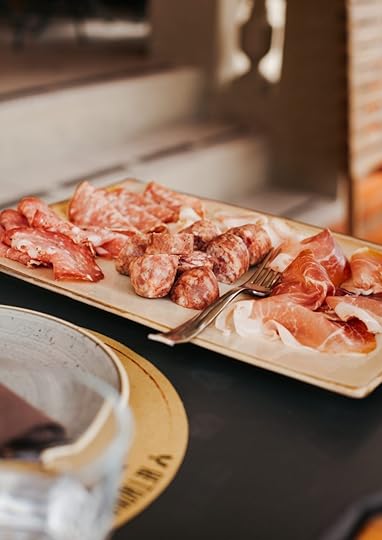
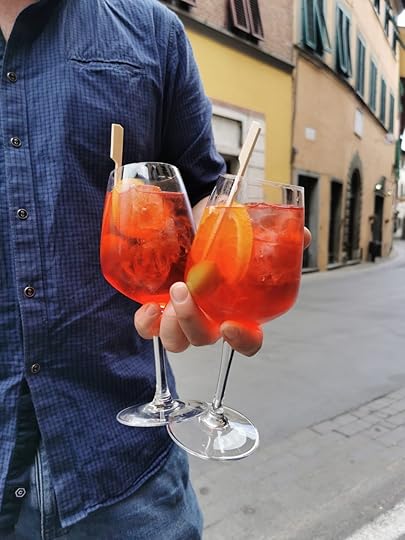
Getting Here
San Miniato is 40 minutes train ride from Florence Santa Maria Novella train station and a very convenient 30 minutes from Pisa airport.
The closest airports are Pisa (30 mins), Florence (40 mins) and Bologna (90 mins). San Miniato is also easily reached by regional train from Florence SMN train station (40 mins) or Pisa (30 mins). From San Miniato-Fucecchio train station there is the 320 bus that will take you to Piazza Dante Alighieri in San Miniato (the last stop), in 15 minutes, departing every 30 minutes.
You can buy a bus ticket (1,80 euro) at the bar below the bus stop (or from an Italian phone number you can send a text message to 4880105 with the word “PISA” from your phone for a virtual ticket). Or call a local taxi driver (Antonio: +39 338 298 5310) to bring you up to San Miniato’s historical town in 5 minutes.

Where to Stay
San Miniato may be small but there are plenty of places to stay at all different budgets. With a car, you could consider one of the many agriturismi in the nearby countryside, otherwise within walking distance from Enoteca Marilu, right in the heart of the historical centre, here are some suggestions:
LUI a cute apartment on Airbnb, a 2 minute walk away
LEI another cute apartment on Airbnb (that can be joined with LUI)
Orange cute apartment on Airbnb
Ser Ridolfo Loft
Dimora del Grifo B&B, simple, classic rooms around the corner from the enoteca
Palazzo Essenza, a brand new palazzo of 5 beautiful rooms in Piazza del Popolo, 1 minute from the enoteca
Hotel San Miniato, a restored 13th century monastery (in need of some updates but comfortable)
Le Finestre del Seminario, new, spartan, spacious and economical rooms in a 17th century Seminary
Umamma Luxury unique apartment in Piazza Bonaparte
Things to note:
The itinerary is a guide; we reserve the right to make changes as necessary, such as where we may need to change the order of activities or replace some of the activities with something equally wonderful.
We require a deposit of 30% upon booking; the remainder should be paid before the workshop starts. This booking is non-refundable unless we are notified at least 90 days beforehand of a cancellation. We can however accept someone to take your place or we can give you a voucher towards any other classes to use within one year. We reserve the right to cancel a workshop if we do not reach the minimum number (5 guests) and in this case deposits will be fully refunded.
This is a really intimate group, there are minimum 5 but only 8 spots maximum available in each workshop!
To book now email us at vino@enotecamarilu.com
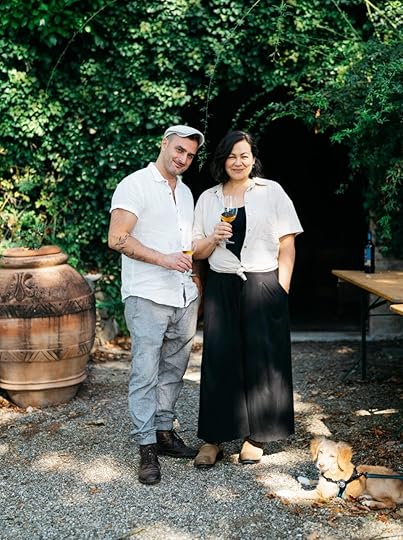
The post Introducing our Seasonal Tuscan Workshops first appeared on Emiko Davies.
Introducing our 2023 workshops
 Introducing our new 5 day Seasonal Workshops at Enoteca Marilu!
Introducing our new 5 day Seasonal Workshops at Enoteca Marilu!
This is a dream project that we’ve been floating around since 2007, when we thought up an idea to host wine tastings on a medieval rooftop tower in Florence. We finally found our very own space to host cooking classes, wine tastings and a natural wine shop — right in the heart of Tuscany, in our little hilltop town of San Miniato. We’ve been renovating it for the past year (see some behind the scenes on our Enoteca Marilu Instagram account!) and it will finally be ready this spring! If you’re not ready to commit to a 5 day workshops, we also offer one day cooking classes on market days and wine masterclasses, you can read about those here.
Let us show you the slow life of our charming Tuscan village, tasting the delicious fresh produce and wonderful artisans making bread, prosciutto, cheese and wine in this area in a small, highly curated and intimate workshop.
We start in the mornings, each day visiting the market, the local butcher, breadmaker or cheesemaker. We will also go hunting for truffles one morning in the woods nearby — black summer truffles, autumn white truffles and spring bianchetto truffles all grow locally to San Miniato. We will cook together, taste wine together, you’ll don an apron and get your hands dirty, learning about local traditions on the way. We eat and drink together, tasting wines chosen by Marco. Afterwards, in the late afternoon and evenings, you are free to go and explore or rest or catch up with family (if you’re traveling with others who are doing their own thing during the day) and sample one of the fantastic restaurants in town.
These seasonal workshops run from around 10am-4pm over 5 days over the following dates:
15-19 May 2023: Late spring workshop
5-9 June 2023: Summer workshop
4-8 September 2023: Late summer workshop
9-13 October 2023: Autumn workshop
14-18 November 2023: White truffle workshop
Who is this for?
It is for people who are curious to explore slow life in a small Tuscan village, who love good food and delicious wine, who want to connect with other people who love food and wine and learn more about the local small producers around here, while picking up some new skills and recipes along the way — it’s for you!


A Sample Itinerary (depending on the season):
Monday: Arrival day; we meet in the late afternoon for a tour around town to get your bearings, followed by aperitivo with nibbles.
Tuesday: We start with a visit to the weekly market to pick up ingredients and see what local produce grows in this area. Then we cook a meal of fresh pasta, two salads and a seasonal cake, which we will enjoy with paired wines.
Wednesday: This morning starts with coffee at the local pastry shop and a taste of some of their specialties, then we go to the kitchen for our own baking. A late lunch will be at a local biodynamic winery with wine tasting and vineyard visit.
Thursday: We head to the woods for a truffle hunt (San Miniato is home to a variety of delicious truffles that are in season all year long). Back in the kitchen you’ll learn how to use truffles in savoury but also sweet dishes. We’ll enjoy these with paired wines chosen from Marco.
Friday: Today we leave the apron behind in the kitchen to visit a local ancient grain grower and baker, then lunch at our favourite countryside trattoria for the best Tuscan experience before we say goodbye.
The cost is 1,600 per person. The white truffle week has an extra white truffle supplement of 100 euro per person.
What is included in the price:
Three cooking classes with an award winning cookbook author Emiko DaviesWine tasting and wine pairings with Tuscan sommelier Marco LamiTruffle hunt in the woods with a truffle hunter and his dog, plus an all-truffle cooking lessonA winery visit with and lunch and wine tastingsTour of San Miniato and tastes around town — coffee, pastries and aperitivo!Visit of local farmers and producers and bakerLunch every day, including one at our favourite trattoria in the countrysideTransport included for all the visits in the itinerary aboveDelicious natural wine during mealsNot included in the cost:
Airfare and travel costs to the workshopAccommodationTravel insuranceTo book now email us at vino@enotecamarilu.com




Getting Here
San Miniato is 40 minutes train ride from Florence Santa Maria Novella train station and a very convenient 30 minutes from Pisa airport.
The closest airports are Pisa (30 mins), Florence (40 mins) and Bologna (90 mins). San Miniato is also easily reached by regional train from Florence SMN train station (40 mins) or Pisa (30 mins). From San Miniato-Fucecchio train station there is the 320 bus that will take you to Piazza Dante Alighieri in San Miniato (the last stop), in 15 minutes, departing every 30 minutes. You can buy a bus ticket (1,80 euro) at the bar below the bus stop (or from an Italian phone number you can send a text message to 4880105 with the word “PISA” from your phone for a virtual ticket). Or call a local taxi driver (Antonio: +39 338 298 5310) to bring you up to San Miniato’s historical town in 5 minutes.

Where to Stay
San Miniato may be small but there are plenty of places to stay at all different budgets. With a car, you could consider one of the many agriturismi in the nearby countryside, otherwise within walking distance from Enoteca Marilu, right in the heart of the historical centre, here are some suggestions:
LUI a cute apartment on Airbnb, a 2 minute walk away
LEI another cute apartment on Airbnb (that can be joined with LUI)
Orange cute apartment on Airbnb
Ser Ridolfo Loft
Dimora del Grifo B&B, simple, classic rooms around the corner from the enoteca
Palazzo Essenza, a brand new palazzo of 5 beautiful rooms in Piazza del Popolo, 1 minute from the enoteca
Hotel San Miniato, a restored 13th century monastery (in need of some updates but comfortable)
Le Finestre del Seminario, new, spartan, spacious and economical rooms in a 17th century Seminary
Umamma Luxury unique apartment in Piazza Bonaparte
Things to note:
The itinerary is a guide; we reserve the right to make changes as necessary, such as where we may need to change the order of activities or replace some of the activities with something equally wonderful.
We require a deposit of 30% upon booking; the remainder should be paid before the workshop starts. This booking is non-refundable unless we are notified at least 90 days beforehand of a cancellation. We can however accept someone to take your place or we can give you a voucher towards any other classes to use within one year. We reserve the right to cancel a workshop if we do not reach the minimum number (5 guests) and in this case deposits will be fully refunded.
This is a really intimate group, there are only 8 spots in each workshop.
To book now email us at vino@enotecamarilu.com

The post Introducing our 2023 workshops first appeared on Emiko Davies.
January 23, 2023
A winter weekend in Turin
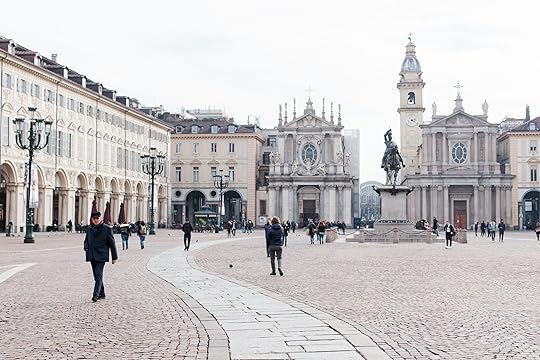
This past weekend we spent a couple of gloriously crisp, sunny winter days with my mother in law, our girls and even the puppy(!) around the elegant northern Italian city of Turin, showing them some favourite old places that we love, while discovering some new spots to add to the list. It was a little harder to do everything that we’ve done on past trips (which, truth be told, involved mainly eating and drinking as I was researching for my third cookbook, Tortellini at Midnight, where I dedicated an entire chapter to the food and drink of Turin), catering to everyone’s needs but I can say that in Turin there is something for everyone and it was a fantastic city break for the family.
My mother in law’s father was from Turin and I wanted her to experience the city that her father loved and talked about so much so we ate at very typical Piemontese restaurants (things that you’ll find in Tortellini at Midnight like classic vitello tonnato, agnolotti al plin, brasato al barolo and more) and enjoyed aperitivo in one of the classic piazze in the centre of town; Torino is the city that invented aperitivo, after all. I ate agnolotti in every restaurant we went to, you’ll see my favourite in the list below.
One of the things that helped taking the children (4 and 10) around in particular was staying right in the centre of town; we rented an airbnb just two steps from Piazza Castello and around the corner from the Mole Antonelliana, which meant everything was within easy walking distance.
Here’s the Turin List from a trip back in 2015 for Corriere della Sera that I can still vouch for — many of these are oldies that we love returning to over and over again (in particular Caffe Mulassano, Caffe Bicerin and Consorzio, which go without saying you must visit).
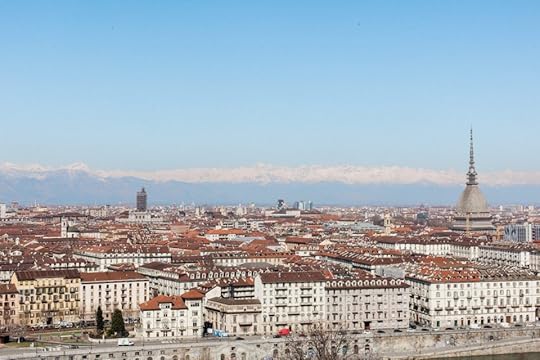
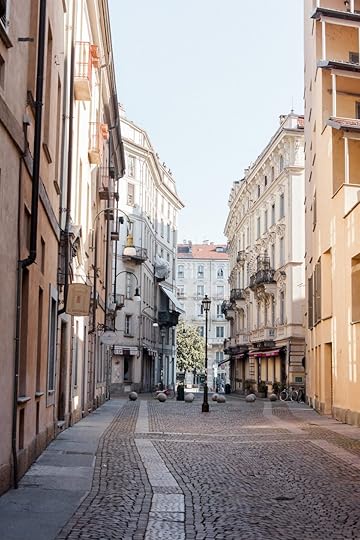
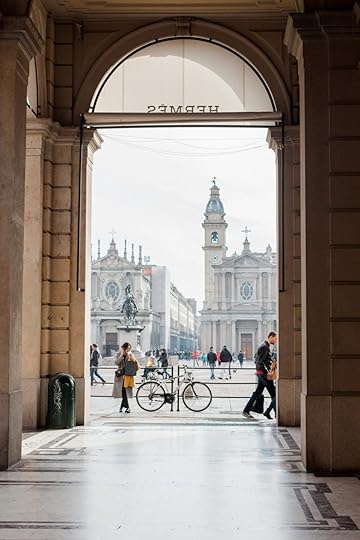
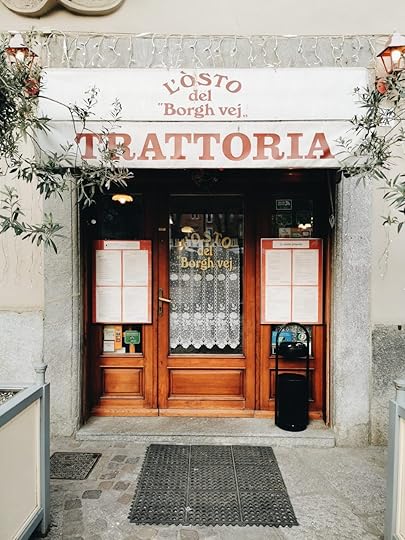 Here are the other things we loved on this trip too:
Here are the other things we loved on this trip too:
Lunch at Porto di Savona. An old school restaurant filled with atmosphere in Piazza Vittorio Veneto where you can find all the classic Turin dishes. Very good tartare (with hazelnut and creamy caprino cheese), housemade pasta and desserts: a cloud-like hazelnut cake, a very good tiramisu (their specialty) and pannacotta (see photo below) with the perfect wobble. Like all good and popular places to eat, book in advance!
The Mole Antonelliana is the striking tower that you see in Turin’s skyline. It houses the museum of cinema and an entirely glass elevator that takes you up to the top of the tower for a 360° view.
A new one for me but definitely my favourite restaurant of this trip: Scannabue in the cute San Salvario neighbourhood. The menu is a mix of super traditional and modern offerings — the agnolotti al plin were divine (see photo below), the best of the trip, and the most delicious, delicate gnocchi in creamy Castelmagno sauce (which are also known as ravioles di melle or gnocchi delle Val Varaita but are unlike any ravioli or gnocchi you’ve seen elsewhere and are made mostly of toma, the local cheese). The girls appreciated the well made club sandwich and hamburger, while sommelier hubby was impressed with the wine list.
Farmacia del Cambio: If you’re going to sit out in a piazza and partake of aperitivo like a good Torinese then this is one elegant spot to do it, the bar of the more famous restaurant Ristorante del Cambio, which has been functioning since the 1700s. Lovely spot for a bicerin (coffee, chocolate and cream, see photo below) on a sunny morning, or aperitivo in the evening with some tramezzini (finger sandwiches).
Two steps from the Farmacia del Cambio is a gorgeous old English language bookshop that I always stop in at, Luxemburg. We spent quite a bit of time here as it’s such a special thing for us to get to browse so many children’s books in English!
The kids loved the Museo Egizio, even though it was overwhelmingly hot (dress in layers!) and quite crowded on a Saturday morning. For younger kids there is a special space Spaziozerosei dedicated to 0-6 years, where they do an activity that lasts 1 hour. You must book everything here quite far in advance and online.
If you need a break from Piemontese food, I was very excited about the Chinese options that you can find here: There’s the wonderful Oh Crispa! and also tiny, takeaway only spots like MU Bao (just down from Luxemburg) and a spot simply called Takeaway Street Food (Via San Francesco d’Assisi 1/c) where they make delicious jianbing and northern Chinese style jiaozi to order.
When my mother in law wanted to bring back some special treats as gifts, I took her to the nearly 200 year old Stratta in beautiful Piazza San Carlo for some pretty chocolates.
A drink at Banco Vini Alimenti, the natural wine bar of Ristorante Consorzio, around the corner. As we didn’t have time to visit the restaurant this trip, we enjoyed a quick drink with some nibbles (giardiniera and cheddar) here instead and took a bottle home too. Lovely (also conveniently around the corner from the jianbing place above).
Our last meal of the trip was at L’Osto del Borg Vej, which is in the cutest little tree filled piazza, close to the cobblestoned streets of the old centre. They do a very classic Piemontese menu. Their agnolotti were tiny and incredibly delicate in a brothier sauce of pan juices than usual — quite nice. We finished with a plate of Piemontese cheeses with quince paste, which was perfect.
Special note on traveling with dogs to Turin: This was our first trip traveling with the puppy and I loved that Turin is such a dog friendly city (you’ll notice everyone walking around town with their dogs!). Ours was allowed in restaurants, no problem, and taxis but you should always mention that you have a dog when booking. If you’re visiting museums, dogs aren’t allowed in most of them BUT there are plenty of dog sitting services for minding your dog while you visit a museum, brilliant! Shoutout to Italo too, which made it very easy to bring our puppy on the train without a carrier (you do have to have with you a soft muzzle just for boarding and exiting the train by law, as well as as buy the puppy a ticket but they give you a dedicated space that has an extra spot for the dog).
Would you like to know more? Let me know in the comments!
Below: 1st and 2nd photos are of Porto di Savona, 3rd photo of agnolotti al plin at Scannabue, 4th photo of bicerin at Farmacia del Cambio and last photo is taken at Banco Vini Alimenti natural wine bar.
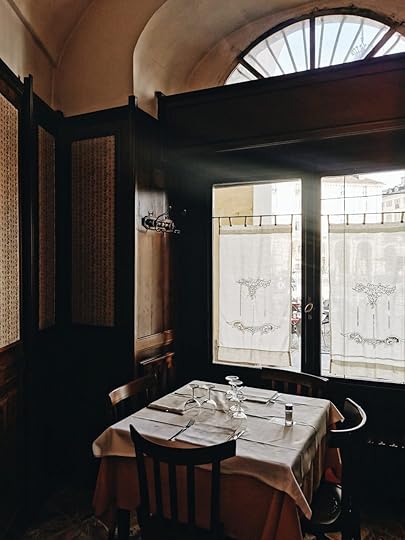
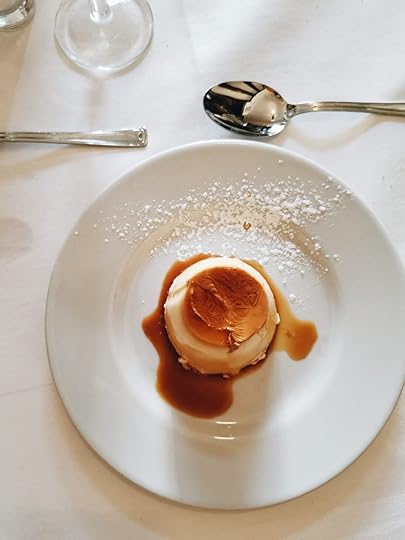
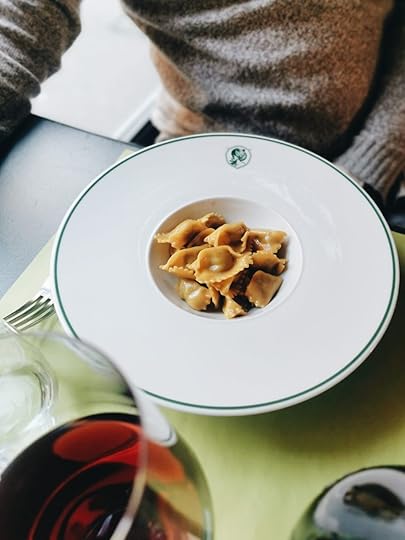
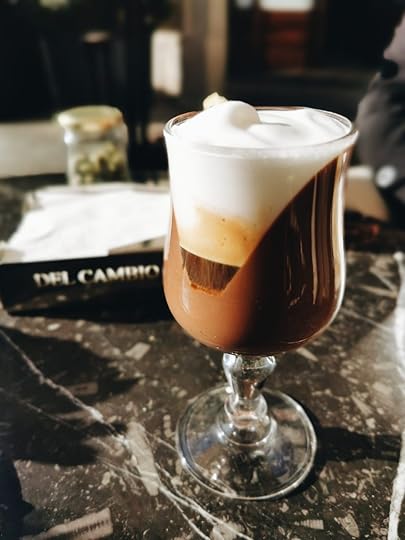
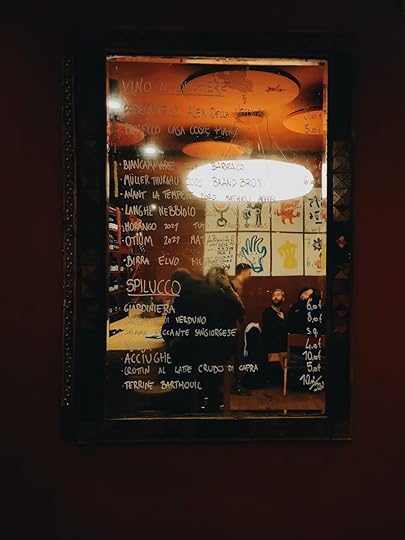
The post A winter weekend in Turin first appeared on Emiko Davies.
Emiko Davies's Blog
- Emiko Davies's profile
- 13 followers



